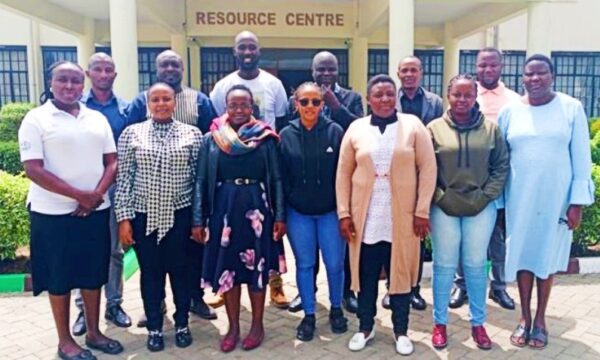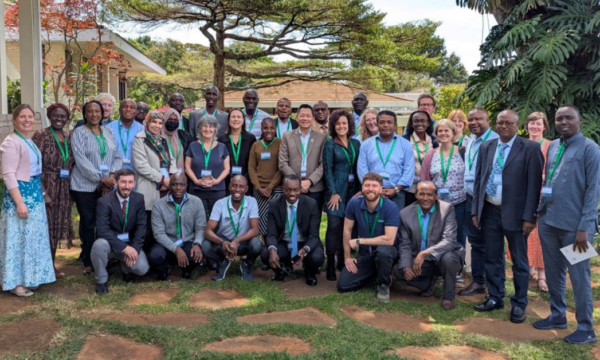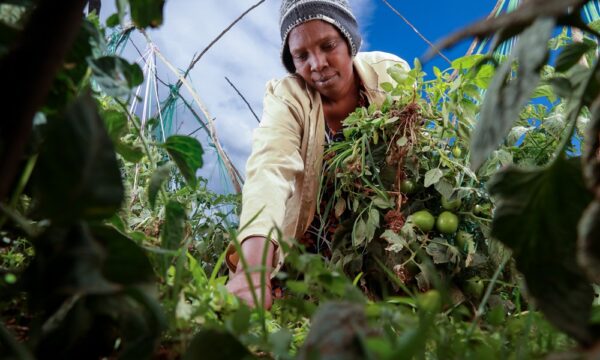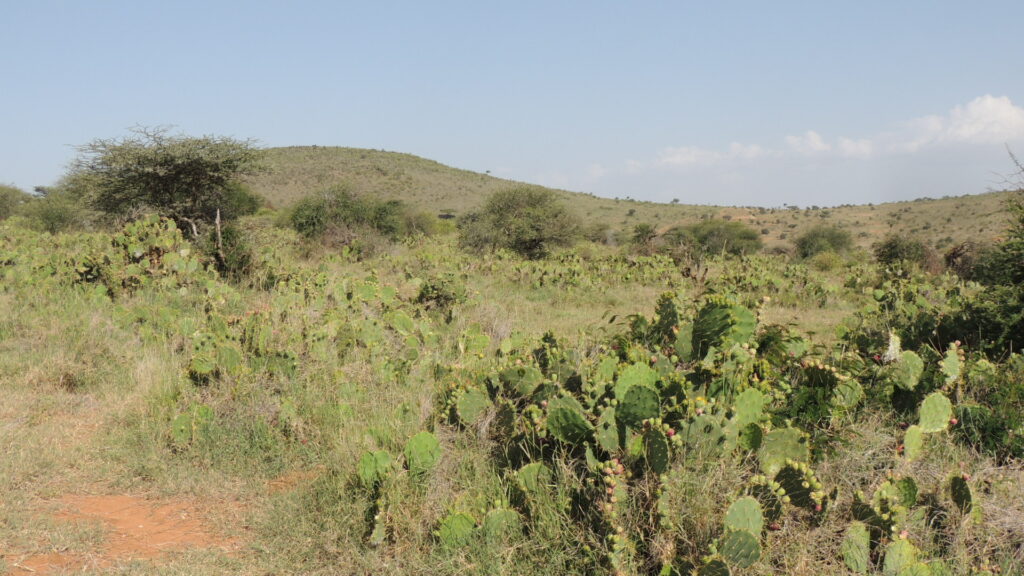
By Dr Arne Witt, CABI Africa
According to the World Resources Centre, Africa accounts for only 2–3 percent of the world’s carbon dioxide emissions from energy and industrial sources. In fact, Africa’s per capita emissions of carbon dioxide in the year 2000 were 0.8 metric tons per person, compared with a global figure of 3.9 tons per person.
However, climate change will have a disproportionate impact on the world’s poorest countries, most of them in Africa. In order to mitigate against climate change, some donors have developed, and in some cases already initiated, massive ‘greening’ programs across much of the continent, largely to sequester carbon dioxide produced by the donor countries themselves.
In some cases, these may benefit African nations by improving land productivity and biodiversity conservation. However, in many cases development agencies advocate the planting of exotic species, many of which are known to be invasive, in large monocultures across what many development actors perceive to be unproductive land or wastelands.
Climate change burden
In other words, Africa not only has to carry the burden of the impacts of climate change, to which they have contributed very little, but now also has to make land available in order to mitigate against those impacts by planting invasive alien species, which are known to have significant negative impacts on the natural resource base on which millions of people directly depend.
To further extenuate the point, they now have to carry a double burden in dealing with climate change and invasive alien species. One such plan is to plant cacti, a group of plant species native to the America’s, across millions of hectares in Africa, as part of the green wall initiative.
The majority of cactus species (250) have mainly been introduced outside of their natural distribution for ornamental purposes while only 45 have been introduced for food or fodder. Of those species that have been introduced outside of their native range, 57 have escaped cultivation and become problematic, particularly in arid rangelands, where they impact negatively on biodiversity and livelihoods.
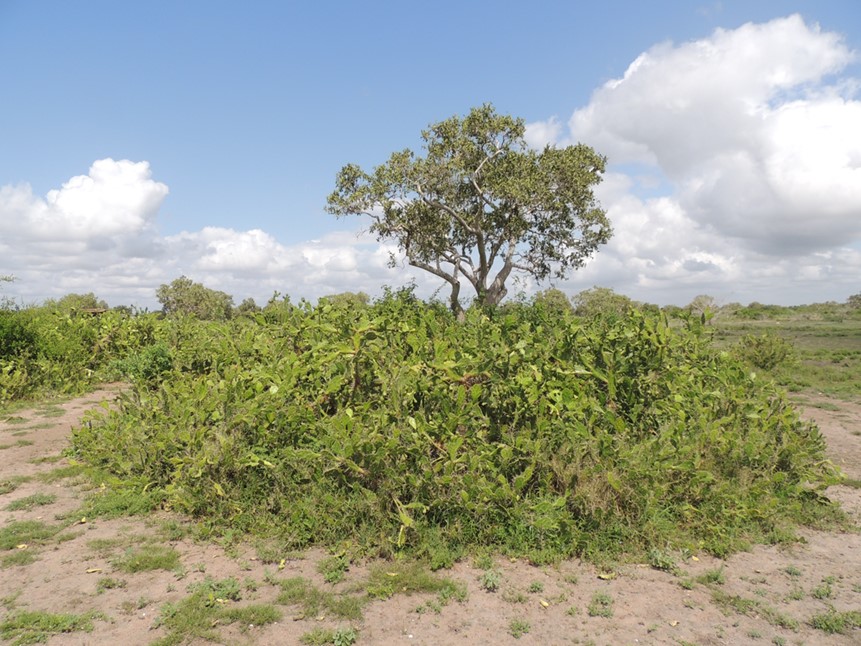
Costly losses
All invasive cactus species form dense impenetrable thickets which reduce rangeland productivity and prevent access to grazing lands and water resources. In Laikipia County, Kenya, two-thirds of respondents estimated that 50-75 percent of valuable grazing land had been invaded by erect prickly pear cactus, which was originally introduced for live fences. In some area’s invasions are so bad that pastoralists have abandoned their land and moved elsewhere.
In Kenya, the majority of pastoralists recorded negative impacts such as mouth sores, weight loss, general sickness, reduced milk production, blindness or eye injuries, and even death of their livestock due to cactus infestations.
In one study, 48% of Kenyan pastoralists interviewed reported losses of US $500-1,000 per household per year due to the negative impacts of invasive alien prickly-pear cactus, and all the pastoralists who were interviewed said human well-being would be improved if the cactus infestations were remove. Even in South Africa invasions of sweet prickly pear in the late 1800s, were so severe that half the affected farming population in the Cape Province was facing extreme poverty.
Not limited to Africa
The problems associated with cactus invasions have not been limited to Africa. In Australia for example, the Australian pest pear, which was first introduced to pastoral areas in the 1840s, covered over 4 million hectares in Queensland and New South Wales by the early 1900s, and by 1925 had invaded over 24 million hectares resulting in the abandonment of large tracts of agricultural land.
In fact, 12 million hectares was so badly invaded that it was considered to be totally ‘useless,’ leading to the large-scale abandonment of farms and homesteads. Even today cactus pear is considered to be problematic in part of its native range in the USA, including Texas, where it occupies about 10.3 million hectares of rangeland reducing livestock carrying capacities.
The reality is that the spread of these and other invasive plant species cannot be contained. In other words, they do not stay where they have been planted. This is largely due to the fact that the fruits are eaten, and the seeds dispersed by birds, bats and mammals.
The pads or stem sections of the cactus will also root if they are broken off the main plant, so reproduction from dislodged stem fragments is another form of reproduction that results in the development of dense and impenetrable stands.
This means that even if only a few thousand hectares of cactus are planted, they are likely to escape cultivation and invade millions of additional hectares in Africa, impacting on poor communities who are already struggling to survive.
Impact of invasive alien plant species
Africa is already awash with many invasive alien plant species, many of which were largely introduced by development agencies to improve livelihoods, but now occupy millions of hectares of productive land where they are impacting on water resources, crop and pasture production, human and animal health, and biodiversity.
While a few species of cactus have some beneficial attributes, such as their capacity to sequester carbon, as well as their use as a fodder crop and the production of edible fruit, these benefits must be weighed up against their potential negative impacts when they invade productive landscapes.
In our experience the costs of invasive species always outweigh the potential benefits. Interventions to mitigate against the impacts of climate change should not be at the cost of poor communities in Africa.
In fact, the only real beneficiaries of such interventions will be those countries that have contributed the most to carbon emissions. Why should Africa carry the double burden of having to deal with a catastrophe to which they have contributed little, and then also carry the cost of carbon sequestration by making its land available to the planting of vast monocultures of invasive species?
Additional information
Main image: Opuntia engelmannii invasions in a conservancy in Laikipia, Kenya (Credit: CABI).
Related News & Blogs
Biodiversity loss: How can we reclaim our landscapes from threats to biodiversity?
On 22nd May, we mark the International Day for Biological Diversity. In this article, CABI’s Global Director for Invasive Species Dr Hariet Hinz looks at how we can reclaim our landscapes from threats to biodiversity. Biodiversity loss is proceeding at…
22 May 2025

